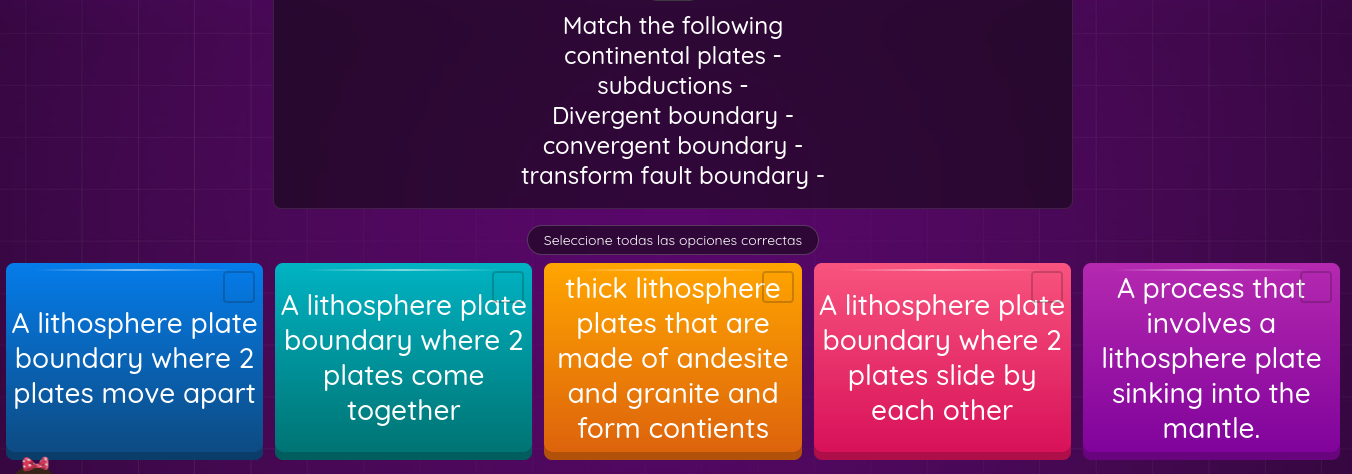Match the following: continental plates - subductions - Divergent boundary - convergent boundary - transform fault boundary.

Understand the Problem
The question is asking to match the definitions of various types of lithosphere plate boundaries and the processes associated with them.
Answer
Continental plates - thick lithosphere plates; Subductions - sinking into mantle; Divergent - plates move apart; Convergent - plates come together; Transform - plates slide by.
Continental plates - thick lithosphere plates that are made of andesite and granite and form continents; Subductions - A process that involves a lithosphere plate sinking into the mantle; Divergent boundary - A lithosphere plate boundary where 2 plates move apart; Convergent boundary - A lithosphere plate boundary where 2 plates come together; Transform fault boundary - A lithosphere plate boundary where 2 plates slide by each other.
Answer for screen readers
Continental plates - thick lithosphere plates that are made of andesite and granite and form continents; Subductions - A process that involves a lithosphere plate sinking into the mantle; Divergent boundary - A lithosphere plate boundary where 2 plates move apart; Convergent boundary - A lithosphere plate boundary where 2 plates come together; Transform fault boundary - A lithosphere plate boundary where 2 plates slide by each other.
More Information
Each type of plate boundary interacts differently, leading to the formation of various geological features such as mountains, trenches, and faults.
Tips
A common mistake is confusing convergent and divergent boundaries. Remember, convergent boundaries bring plates together, while divergent boundaries move them apart.
Sources
- What are the different types of plate tectonic boundaries? - oceanexplorer.noaa.gov
- Continental Movement by Plate Tectonics - manoa.hawaii.edu
- Plate Tectonic Boundaries | Divergent, Convergent & Transform - study.com
AI-generated content may contain errors. Please verify critical information